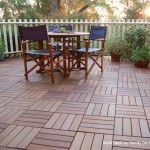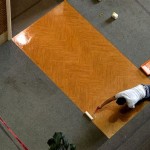Can You Put Vinyl Flooring Over Concrete? A Comprehensive Guide
The question of whether vinyl flooring can be installed over concrete is a common one for homeowners and contractors alike. The short answer is yes, vinyl flooring can often be installed over concrete. However, a successful installation hinges on several critical factors related to the condition of the concrete slab and the type of vinyl flooring being used. Careful consideration of these aspects is essential to prevent future problems such as moisture issues, adhesive failure, and uneven flooring.
Vinyl flooring is a popular choice due to its durability, water resistance, and diverse aesthetic options. It is available in various forms, including sheet vinyl, vinyl tiles, and luxury vinyl planks (LVP). Each type offers different installation methods and varying degrees of moisture resistance. Concrete, on the other hand, is a porous material that can absorb and release moisture, making it a potentially challenging substrate for vinyl flooring.
Before embarking on a vinyl flooring installation over concrete, a thorough assessment of the concrete slab is paramount. This assessment will determine if the concrete is suitable for vinyl flooring and what preparatory steps are necessary to ensure a long-lasting, problem-free installation.
Key Point 1: Assessing the Concrete Slab's Condition
The condition of the concrete slab directly impacts the success of a vinyl flooring installation. Several factors need careful evaluation:
*Moisture Levels:
Concrete is porous and susceptible to moisture. Excess moisture trapped beneath the vinyl flooring can lead to mold growth, adhesive failure, and warping of the vinyl. A moisture test is crucial. Several methods exist, including the calcium chloride test (anhydrous calcium chloride test) and the relative humidity (RH) test. The calcium chloride test measures the rate of moisture vapor emission (MVER) from the concrete surface. The RH test measures the relative humidity within the concrete slab. Both tests provide valuable data to determine if the moisture levels are within acceptable limits for the chosen vinyl flooring and adhesive. Most vinyl flooring manufacturers specify maximum acceptable moisture levels. If moisture levels exceed these limits, mitigation strategies must be implemented, such as applying a moisture barrier membrane. *Levelness and Smoothness:
Vinyl flooring requires a smooth and level surface for proper adhesion and a professional finish. Any significant bumps, dips, or cracks in the concrete can telegraph through the vinyl, creating an uneven and unsightly appearance. A self-leveling compound can be used to address minor imperfections and create a smooth, even surface. More significant irregularities may require grinding or patching before applying the self-leveling compound. Use a long, straight edge to check for unevenness. Gaps between the straight edge and the concrete surface indicate areas needing attention. *Cleanliness:
The concrete surface must be free of dirt, dust, grease, paint, and any other contaminants that could interfere with the adhesive bond. Thoroughly sweep or vacuum the concrete to remove loose debris. For stubborn stains or residues, use a concrete cleaner or degreaser specifically designed for surface preparation before flooring installation. Rinse the surface thoroughly and allow it to dry completely before proceeding. *Integrity:
Examine the concrete for cracks, spalling (surface flaking), or other signs of structural damage. While minor hairline cracks are often acceptable, larger cracks or areas of significant damage may indicate underlying structural problems that need to be addressed before installing vinyl flooring. Consult with a structural engineer or concrete specialist to assess the severity of the damage and recommend appropriate repairs. Ignoring structural issues can lead to further damage and premature failure of the flooring installation.Failing to properly assess and address these aspects of the concrete slab's condition can lead to costly and time-consuming repairs later on. Taking the time to prepare the substrate correctly is a crucial investment in the longevity and appearance of the vinyl flooring.
Key Point 2: Selecting the Right Type of Vinyl Flooring and Adhesive
Choosing the appropriate type of vinyl flooring and adhesive is critical for a successful installation over concrete. Different types of vinyl flooring have varying degrees of moisture resistance and require specific types of adhesives.
*Sheet Vinyl:
Sheet vinyl offers excellent water resistance due to its seamless construction. It is a good choice for areas prone to moisture, such as bathrooms and kitchens. However, proper adhesion is crucial to prevent bubbling or lifting, especially in areas with high foot traffic. Use a manufacturer-recommended adhesive specifically formulated for sheet vinyl and concrete. *Vinyl Tiles:
Vinyl tiles are available in various styles and offer design flexibility. They are generally less expensive than sheet vinyl or LVP but are also more susceptible to moisture infiltration through the seams. Ensure that the concrete is properly sealed and use a moisture-resistant adhesive to minimize the risk of moisture-related problems. *Luxury Vinyl Planks (LVP):
LVP mimics the look of hardwood flooring and offers excellent durability and water resistance. Many LVP products are designed with click-lock installation systems, which can minimize the need for adhesive. However, even with click-lock systems, it is essential to ensure that the subfloor is level and free of moisture. Some LVP products may require adhesive, especially in high-traffic areas or commercial settings. In such cases, use a moisture-resistant adhesive recommended by the LVP manufacturer. *Adhesive Selection:
The choice of adhesive is paramount for successful vinyl flooring installation over concrete. Use an adhesive specifically formulated for vinyl flooring and concrete substrates. These adhesives are designed to bond effectively to both materials and withstand the potential for moisture migration. Read the adhesive manufacturer's instructions carefully and apply the adhesive according to their recommendations. Using the wrong type of adhesive or applying it improperly can lead to adhesive failure, resulting in loose or bubbling flooring. Ensure the adhesive is compatible with the specific type of vinyl flooring being used. Some adhesives are designed for specific types of vinyl or installation methods.Consider the intended use of the space and the potential for moisture exposure when selecting vinyl flooring and adhesive. Investing in high-quality materials and following manufacturer's recommendations will contribute significantly to the long-term performance and appearance of the finished floor.
Key Point 3: Installation Best Practices for Vinyl Flooring Over Concrete
Following proper installation techniques is crucial for ensuring that the vinyl flooring adheres properly to the concrete and provides a durable, long-lasting surface.
*Acclimation:
Allow the vinyl flooring to acclimate to the room's temperature and humidity for at least 48 to 72 hours before installation. This allows the vinyl to expand or contract to its natural size, minimizing the risk of buckling or gapping after installation. Store the vinyl flooring in the room where it will be installed, away from direct sunlight or heat sources. *Layout and Planning:
Before applying any adhesive, plan the layout of the vinyl flooring to minimize cuts and ensure a visually appealing pattern. Consider the placement of seams, especially in sheet vinyl installations. Stagger seams to avoid creating a grid-like appearance. *Adhesive Application:
Apply the adhesive evenly, using the recommended trowel size. Follow the adhesive manufacturer's instructions regarding open time (the time allowed for the adhesive to become tacky) and working time (the time available to install the flooring after applying the adhesive). Applying too much adhesive can lead to bubbling, while applying too little can result in poor adhesion. Work in small sections to prevent the adhesive from drying out before the flooring is installed. *Rolling and Seaming:
After installing the vinyl flooring, use a floor roller to ensure firm contact between the flooring and the adhesive. Pay particular attention to seams, edges, and corners. For sheet vinyl installations, use a seam roller to create a tight, waterproof seal between adjacent sheets. Follow the manufacturer's instructions for seaming techniques. *Curing Time:
Allow the adhesive to cure fully before allowing heavy foot traffic on the newly installed flooring. Follow the adhesive manufacturer's recommendations for curing time. Protect the flooring from damage during the curing process. *Expansion Gaps:
When installing vinyl planks or tiles, maintain a small expansion gap around the perimeter of the room to allow for natural expansion and contraction of the flooring. Consult the manufacturer's instructions for the recommended expansion gap size. Cover the expansion gap with baseboards or trim to create a finished look.Proper installation techniques not only ensure a professional-looking result but also contribute to the longevity and performance of the vinyl flooring. Paying attention to detail and following manufacturer's recommendations are essential for a successful installation over concrete.
In addition to the above points, it's essential to consider warranties. Many vinyl flooring manufacturers offer warranties that cover defects in materials and workmanship. However, these warranties often require specific installation procedures and may be voided if the flooring is not installed according to the manufacturer's instructions. Read the warranty document carefully before beginning the installation process.
Installing vinyl flooring over concrete can be a successful project with proper planning, preparation, and execution. However, it is crucial to understand the potential challenges and take the necessary steps to mitigate them. Ignoring the condition of the concrete slab, selecting the wrong type of vinyl or adhesive, or failing to follow proper installation techniques can lead to costly problems down the road. By carefully addressing these factors, homeowners and contractors can ensure a beautiful, durable, and long-lasting vinyl floor.

How To Prepare A Concrete Floor For Vinyl Flooring Parrys

How To Install Vinyl Plank Flooring On Concrete Step By Tutorial

How To Install Vinyl Plank Flooring On Concrete Step By Guide

Can You Put Vinyl Tile On Concrete Floor Ready To Diy

Tips For Installing Vinyl Plank Over Concrete Floors Lemon Thistle

How To Install Vinyl Plank Flooring On Concrete Base

Concrete Subfloor Preparation For The Vinyl Floor Installation How To Diy Mryoucandoityourself

Easy Ways To Install Vinyl Plank Flooring On Concrete

Installing Laminate Flooring Over Concrete The Ultimate Guide Aa Floors

How To Install L And Stick Vinyl Tile On Concrete Floor Self Installation








